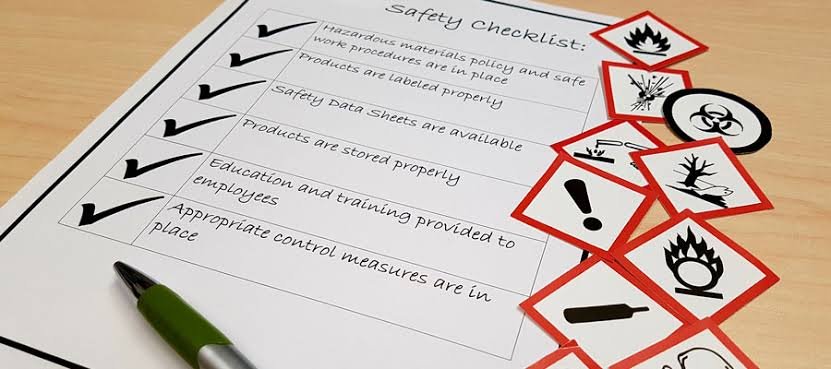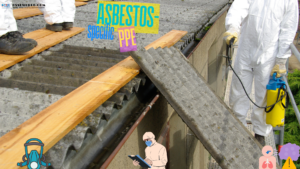Control of work safety tips
5 min readWhenever your company conducts construction, maintenance, demolition, remediation and other similar work that are typical of your industry, there is the potential for harm to people and the environment and for damage to equipment. An effective Control of Work process provides a work environment that allows tasks to be completed safely and without unplanned loss of containment with the potential to cause environmental damage or to damage a plant or equipment. This safety Tips sets out the framework for the required approach to manage work risks.


Control of Work Policy
Its Management responsibility and commitment to provide so far as is reasonably practicable a working environment that is safe and without risk to health to all its employees, contractors and others.
Whenever Company conducts construction, maintenance, demolition, remediation and other similar work that are typical of It’s industry, there is the potential for harm to people and the environment and for damage to equipment. An effective Control of Work process provides a work environment that allows tasks to be completed safely and without unplanned loss of containment with the potential to cause environmental damage or to damage a plant or equipment.
you have to applies the 12 elements of Control of Work:
Plan the work:
a) Procedures exist describing the Control of Work process.
b) All identified roles within the Control of Work procedure have defined responsibilities.
c) All persons involved in the Control of Work process are appropriately trained and competent to carry out their roles.
d) Planning and scheduling of work identifies individual tasks and their interaction.
Assess and manage the risk:
e) All tasks are risk assessed.
f) Before conducting non-routine work that involves confined space entry, work on energy systems, ground disturbance, hot work in potentially explosive environments, or other potentially hazardous activities, a work permit (or work clearance) is obtained.
g) The scope, hazards, controls and mitigation are communicated in writing and signed off by all involved in the task.
Control the work:
h) All ongoing work requiring a permit is regularly monitored and managed by a responsible person.
i) The work site is left in a safe condition on completion or interruption of the work.
Capture the learning:
j) The Control of Work process is subject to a program of regular verification.
k) Internal and external lessons learned that impact the Control of Work process are captured, incorporated and shared.
Stop unsafe work:
l) Everyone has an obligation to stop unsafe work.
This policy applies equally to visitors, employees and contractors of company regardless of their position, level or function.
Methodology
1-Training and Competency
Employees who are involved in the Control of Work process shall be trained and competent in the tasks they are performing and meet the competency requirements for their assigned control of work roles.
2-Planning and Scheduling
Irrespective of whether the work is routine or non-routine, or whether it requires a Work Permit or Work Clearance, the person responsible for planning the work shall allow time for the following actions for the safe execution of the work
a) Define the scope of work;
b) Identification of personnel and equipment required.
c) Identification of dependent and linked work
d) Identification of SIMOPS and their compatibility with the work
e) Review associated procedures / Risk Assessments / JSA / SWMS;
f) Define any Regulatory requirements;
g) Inspection of the work site
h) Conduct a risk assessment of the task
i) Implementation of control measures including isolation
j) Arrange resources for the work including the provision of the approval issuing authority if work is required to be undertaken under a work permit; and
k) Coordinate and priorities work to reduce conflict between tasks.
Subject Matter Experts (SMEs) may be included in the planning stages, as required by the technical complexity of the task(s).
3- Task Based Risk Assessment
All tasks shall be risk assessed. For routine works this forms part of the development of a risk assessed work instruction or procedure of your company. For non-routine work this is part of the process documented in company procedure or Work Authorization ex Permit to Work procedure and risk assessment .
4-Lessons Learned
As part of the continuous improvement of company Control of Work processes, the findings of the Lessons Learned shall be incorporated into the following if necessary:
a) Procedures and Documentation; and
b) Control of Work communications.
All persons involved in the Control of Work process should take a proactive approach to the lessons learned process.
5-Verification
The key process steps outlined in this Control of Work procedure are included in a Self-Verification Programe, this includes three components.
Level 1 – Entity Level.
This management review is carried out in accordance with company procedures. This includes a review of the effectiveness of the site self-verification framework by checking at the entity level if the local system is fully implemented and applied systematically in conformance with company and legal requirements. It also reviews whether the program is producing the required outcomes.
Level 2 – System Level.
This includes Program Review and Barrier Deep Dives in accordance with company procedure. It is a review of key procedures (including Control of Work), processes and barriers to verify that they are being implemented as intended and evaluates the effectiveness of site procedures, processes and barriers. It includes focused activity that tests the strength of a sample of key barriers. These are carried out by the HSE team and other Subject Matter Experts. Results from control of work Level 2 Verification activities are presented to the Operating Business and the Control of Work Lead; and then feed into the Entity Level Management Review.
Level 3 – Task Level.
This level provides a view of workforce safety behaviors on high risk tasks performed, and onsite verification of key risk controls.
a) Control of Work Desktop reviews:
Regular and adhoc reviews are conducted by the Control of Work team, or delegates to verify compliance and competence. In accordance with Work Authorization, all Permit Officers, as a minimum, undergo a desktop review of a sample of permit sets every two years to maintain their authority.
b) Field Inspections:
Field inspections are carried at work sites as part of a systematic program of self verification in the field. These are checks carried out on site where the job is being performed. The purpose is to confirm compliance and competence, and to support the engagement of workers exhibiting the desired safety behaviors whilst work is being undertaken. The Field Inspection program is risk based with the tools and the activities targeted dependent on the level of competence of the versifier.



